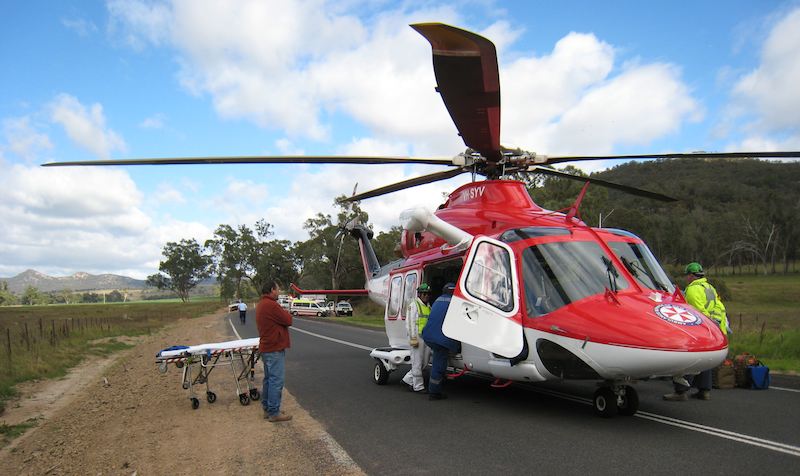
Prehospital and retrieval service of HEMS Australia: a review
The Greater Sydney Area Helicopter Emergency Medical Service (HEMS) operates a large, physician-staffed, multimodal, prehospital and interhospital retrieval service.
There is little current evidence regarding which therapeutic agents are actually used within existing aeromedical services. The aim of the present study was to identify the range and frequency of drug, fluid and blood product use within our service.
Methods
This was a retrospective cross-sectional study. Case sheets relating to a 12 month period were inspected to identify the therapeutic agents used by retrieval teams during each mission. Corresponding case notes, demographic data (age, sex) and case data (prehospital vs interhospital, trauma vs medical) were extracted from an electronic database.
Results
Of 2566 missions, 848 were prehospital, 1662 interhospital and 56 mixed. Prehospital missions were associated with fewer agents per case (median, 2 vs 3) and a narrower range of agents overall (45 vs 117) compared to interhospital missions.
In both mission types, the most frequently used agents included morphine, fentanyl, Hartmann’s solution, ketamine, rocuronium, ondansetron and midazolam.
Noradrenaline, propofol and metaraminol were used frequently in interhospital missions only. A number of stocked and unstocked agents were used less commonly, or not at all, over the study period.
Conclusions
The results of the present study form a practical guide to aid prehospital and retrieval service in establishing or reviewing their medical agent formularies. Key practice points illuminated by the data provide insights into current practice in critical care.
There remains a clear need for similar studies from other services worldwide.

